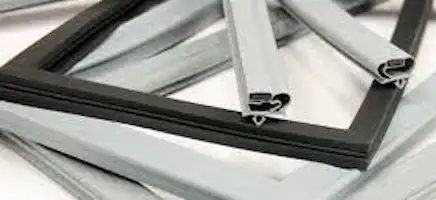
Solving Door Seal Issues
In this article we delve into the technical aspects of door seal issues in refrigerators. Also, we discuss the importance of a well-functioning door seal, the common problems that may arise, and offer practical solutions to help you maintain an energy-efficient and optimally performing refrigerator.
Contents
Table of Contents:
- The Role of Refrigerator Door Seals
- Common Door Seal Issues
- Troubleshooting and Repairing Door Seal Problems
- Preventative Maintenance Tips
- Frequently Asked Questions
- Conclusion: Ensuring a Well-Sealed Refrigerator
The Role of Refrigerator Door Seals
Refrigerator door seals, also known as gaskets, play a crucial role in the overall performance and efficiency of your appliance. They create an airtight barrier between the refrigerator’s interior and the external environment, preventing warm air from entering and cold air from escaping. This helps maintain consistent temperatures inside the refrigerator, reduces energy consumption, and ensures optimal food preservation.
Common Door Seal Issues
Door seal issues can arise for various reasons, including:
Wear and Tear
Over time, door seals can become worn or damaged due to frequent use, leading to gaps or tears in the material.
Deterioration
Exposure to heat, cold, and humidity can cause the door seal material to deteriorate, harden, or lose its elasticity.
Improper Installation
Incorrectly installed door seals may not create a proper seal, leading to energy inefficiency and temperature fluctuations.
Dirt and Grime Buildup
Accumulated dirt, grime, or food particles can prevent the door seal from closing properly.
Troubleshooting and Repairing Door Seal Problems
To diagnose and repair door seal issues, follow these steps:
Step 1: Visual Inspection
Inspect the door seal for visible signs of wear, damage, or deterioration. Look for any gaps, tears, or deformities in the material.
Step 2: Cleaning
Using a mild detergent and warm water, clean the door seal to remove any dirt or grime buildup. Ensure that the seal is completely dry before closing the refrigerator door.
Step 3: Paper Test
Place a piece of paper between the door seal and the refrigerator’s body. Close the door and attempt to pull the paper out. If it comes out easily or falls out, the door seal may not be functioning correctly.
Step 4: Repair or Replace
Depending on the extent of the damage or deterioration, repair the door seal with adhesive or replace it entirely, following the manufacturer’s guidelines.
Preventative Maintenance Tips
To extend the life of your refrigerator’s door seals and prevent issues, consider these maintenance tips:
Regularly clean the door seals to remove dirt, grime, and food particles.
Inspect the door seals for signs of wear, damage, or deterioration during routine refrigerator cleaning.
Ensure proper alignment of the refrigerator doors and adjust them if necessary.
Lubricate the door seals with a thin layer of petroleum jelly to maintain their elasticity and prevent sticking.
Frequently Asked Questions (FAQs)
How often should I replace my refrigerator door seals?
The lifespan of refrigerator door seals can vary depending on usage and environmental factors. However, it is generally recommended to replace door seals every five to eight years, or sooner if they show signs of wear, damage, or deterioration.
Can I replace the door seal myself, or should I hire a professional?
Replacing a refrigerator door seal can be a DIY project if you feel comfortable following the manufacturer’s instructions and have the necessary tools. However, if you are unsure or prefer a professional touch, hiring a certified appliance technician is recommended.
How can I determine the correct replacement door seal for my refrigerator model?
To find the right replacement door seal, refer to your refrigerator’s user manual or contact the manufacturer with your model number. They will provide the specific part number or a compatible door seal for your appliance.
How can I prevent door seal issues?
Regular maintenance, including cleaning, inspecting for wear and tear, and lubricating the door seals, can help prevent door seal issues. Additionally, ensure proper door alignment and avoid forcefully closing the refrigerator doors to minimize damage to the seals.
Conclusion: Ensuring a Well-Sealed Refrigerator
A well-sealed refrigerator is essential for maintaining energy efficiency and optimal food preservation. By understanding the importance of door seals, being aware of common issues, and following preventative maintenance tips, you can keep your refrigerator running smoothly and efficiently. Stay connected to the our blog for more technical insights, practical solutions, and expert advice on all aspects of refrigerator repair and maintenance.
